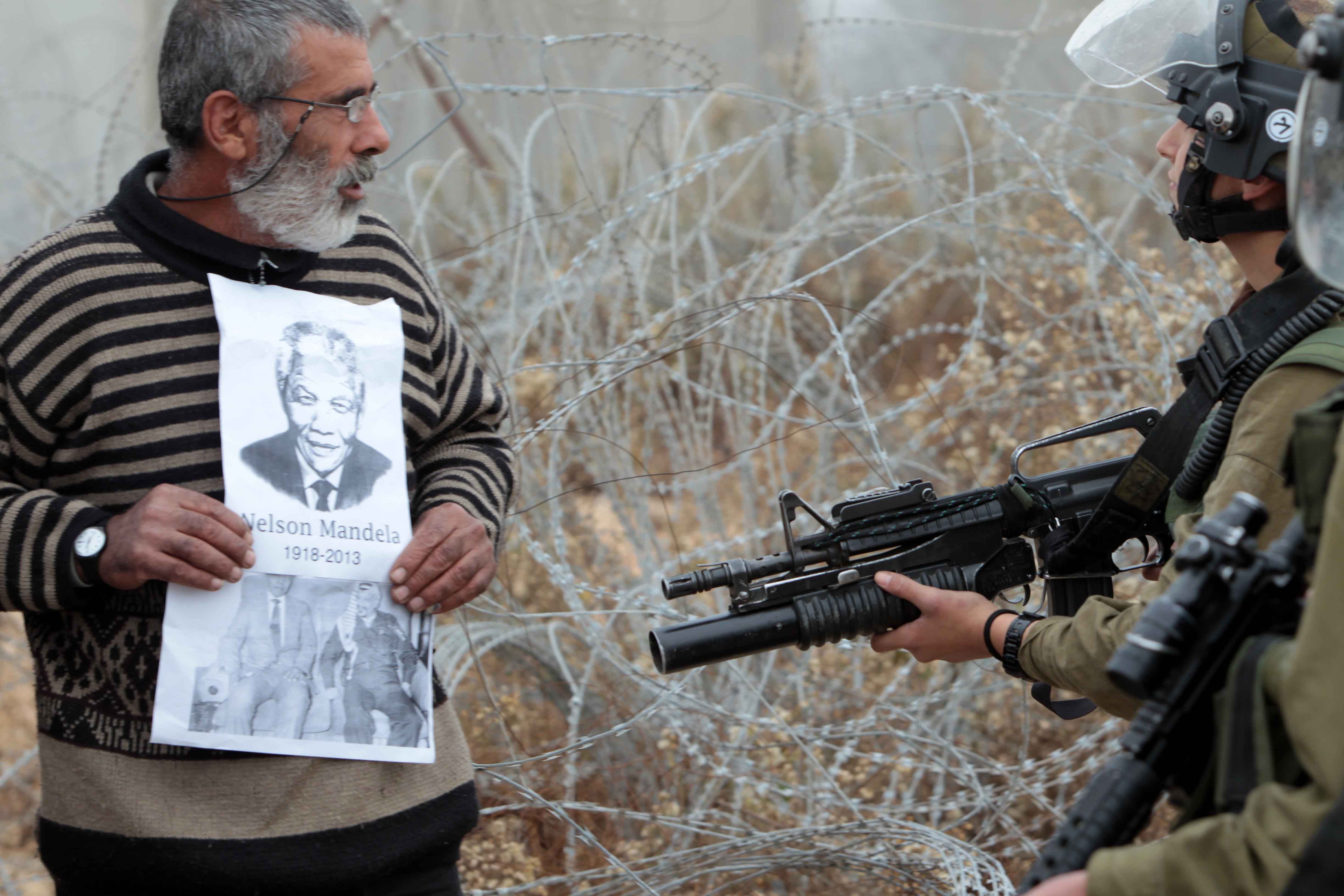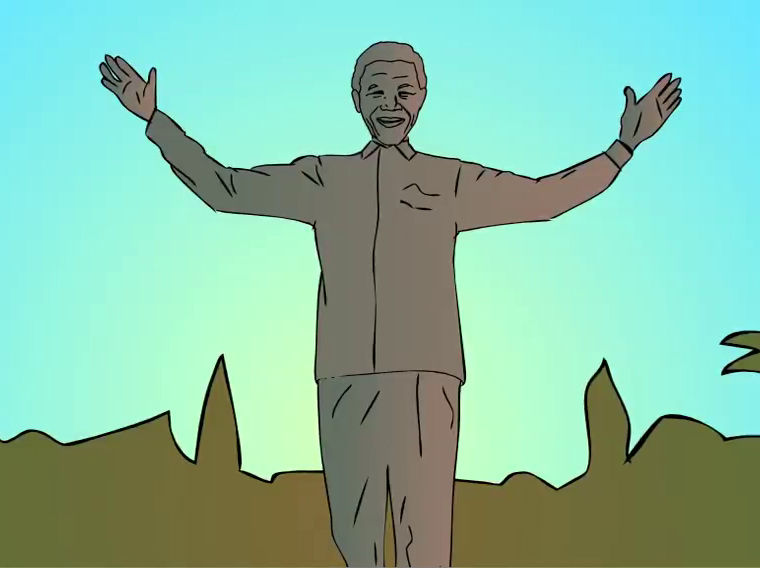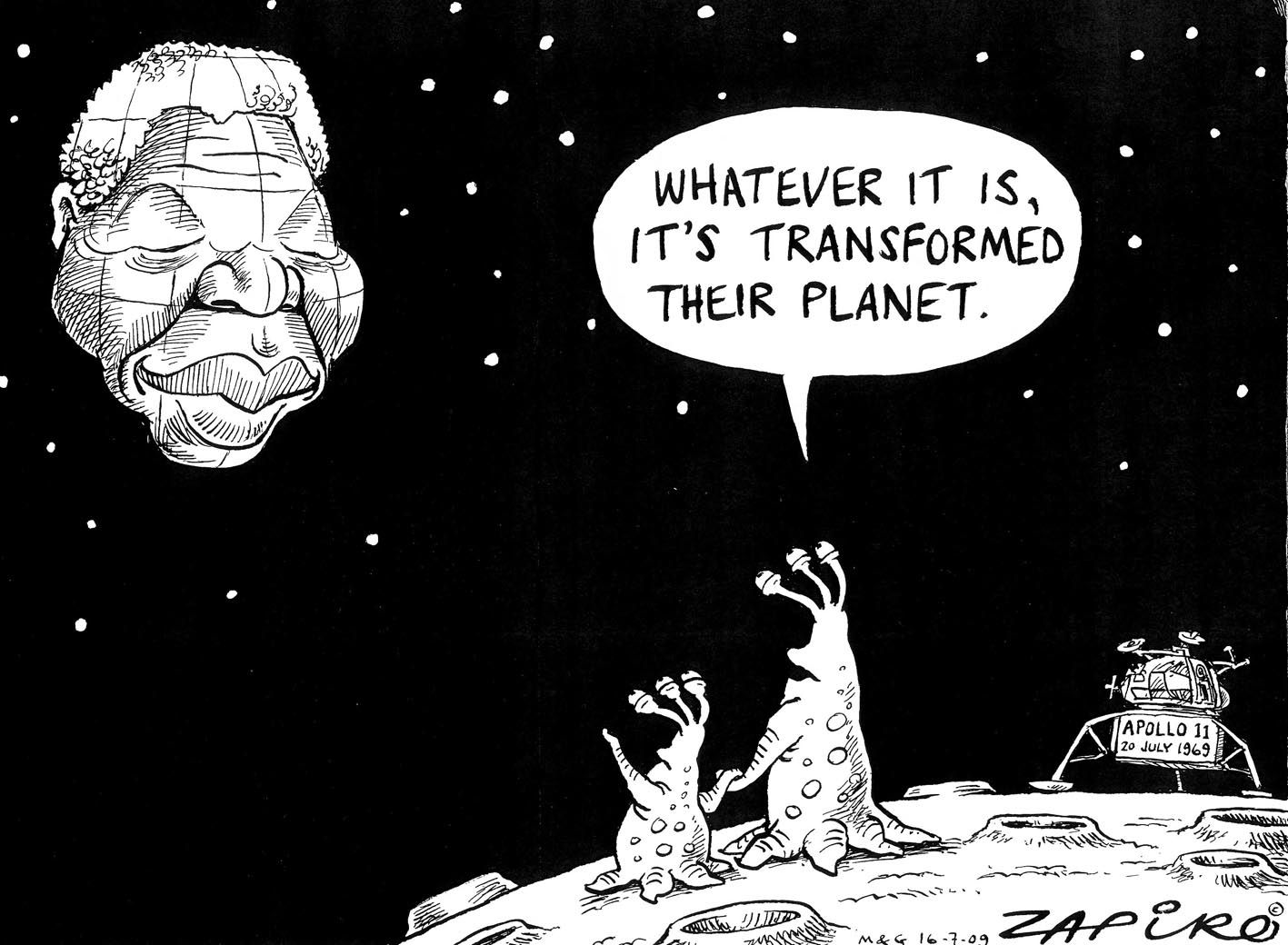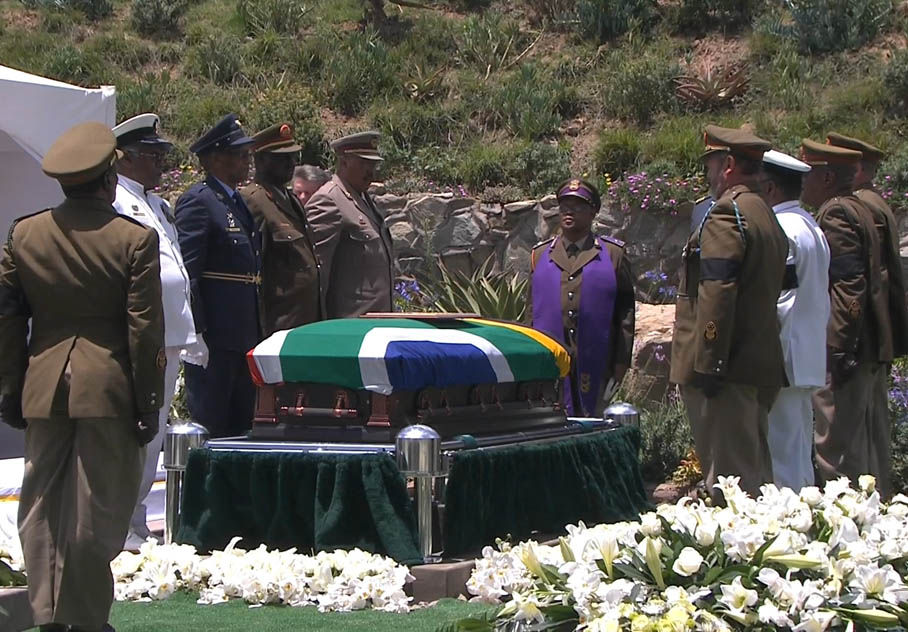
The world pays tribute to Mandela (slideshow)
As South Africans come to terms with the loss of former president Nelson Mandela, the rest of the world bids farewell to Madiba.

Pimples: Saving Madiba's rabbit (video)
Gwede, Mac and Blade try their best to stop the rabbit from whispering in Mandela's ear. But the elusive animal has some tricks up its sleeve.

Zapiro's best Madiba cartoons (slideshow)
From his toughest moments to his most triumphant, Madiba has been an inspiration. Here are some of our favourite Zapiro cartoons about him from 1994 to 2013.

Mandela: SA's greatest son laid to rest (slideshow)
The world watched as Nelson Mandela was finally laid to rest in his hometown of Qunu following a dignified and moving funeral ceremony on Sunday.

Is there one photograph that captures contemporary South Africa with as much iconic force as the way Bob Gosani's image of Nelson Mandela boxing on a Jo'burg rooftop caught the pugilism of the 1950s?
Or the way Sam Nzima's image of Hector Pieterson froze 1976?
Or the way those views of snaking queues have become an icon for 1994?
Johannesburg is awash with historical and documentary photographic exhibitions at the moment and I have been pondering these questions while wandering through the Johannesburg Art Gallery ("Ernest Cole" and "South African Photography 1950-2010"), Art on Main ("Ranjith Kally" at Bailey Seippel) and the Goodman Gallery (David Goldblatt's "TJ").
The Goldblatt exhibition documents his extraordinary 60-year engagement with Johannesburg.
In a series shot at pedestrian crossings on Eloff Street in 1967, the pretext is masterful: no matter how hard the state tried to separate us, we were all thrown together while waiting for that little red man to turn green. And so the images unstitch the work of apartheid and find, in everyday urbanity, the seeds of its downfall.
With this in mind, I conducted a little experiment last Monday at lunchtime: I drove through the city and at every light I took out an imaginary camera and pretended to be David Goldblatt. The results shocked me.
There were not just fewer colours on the street, there were fewer people in general. Of course there's a crush in the taxi ranks at rush hour, but on the whole we do not rub up against one another on the street, in all our differences, the way we used to.
We are not the country Goldblatt's photos had imagined we might be. Even as our population has grown, it has dispersed.
There are plausible explanations: the motor car, crime.
Ernest Cole shows the downside of Johannesburg's urbanity in a compelling series documenting street conflict in the 1960s: black men mugging white victims; a white man assaulting a black pickpocket; a well-dressed white man slapping a black street kid across the face.
Such violent encounters are still very much part of the South African experience, although they are no longer the simple racial allegories Cole found in them 40 years ago.
Goldblatt, for one, has averted his gaze and has chosen, instead to engage with the subject by shooting a deeply empathetic series of portraits of rehabilitated criminals at the scenes of their crimes.
Goldblatt also finds a way to express the atomisation, the alienation, of contemporary South African life in another series on show: large colour photographs of Johannesburg's squatter settlements, cluster complexes and shopping malls; all eerily depopulated.
He offers us only one contemporary counter: an interior view of the Central Methodist Church in downtown Johannesburg. There are so many abject bodies of Zimbabwean refugees that you might mistake it at first for a shot of the Rwandan genocide; the effect is intense. As you swivel from the evacuated exteriors of the city to this dense interior, you feel the truth of the Gini-coefficient statistics: we are one of the most unequal societies on Earth.
Is this what makes us South African?
Nationalism stakes out boundaries, and so much of South African identity has been about living within these; defining ourselves against those on the other side. After 1994 the boundaries seemed to have been extended: the "Rainbow Nation" defined us inclusively.
While this might have held the country together in the face of possible dissolution at the time, it soon revealed its inadequacies.
More recently, the World Cup played a significant role in reinforcing a shared identity around a common set of symbols (a flag, a team) and values (hospitality, inclusiveness). But the Reputation Institute of South Africa recently released findings suggesting that while foreign perceptions of South Africa have improved since the World Cup, our own perceptions of our country have taken "a serious dive".
This can be explained by the way the violent public sector strike followed so hard on the heels of the World Cup.
It talks not only to the manic-depressive nature of the South African political psyche but to a realisation of the harsh inequalities of our society that appeared to be bridged, momentarily, by the World Cup.
And so, while we might already be nostalgic for the World Cup, most South Africans would have a hard time cropping an iconic image out of the event that would symbolise 2010 the way those snaking queues did 1994.
The only way one could represent "South Africanness" today would be through juxtapositions: vuvuzela glory days and angry strikers; the dull luxury of the Maponya Mall, as captured by Goldblatt, alongside the refugees in the Central Methodist.
What this suggests is that being South African today is not so much about drawing borders and remaining within them, whether these are exclusive, as in apartheid, or inclusive, as in the Rainbow Nation. Rather, it is about being conscious of the shifting frontiers that are so much part of our history; of how they ringfence us and how we might cross them.
For this reason, if I were forced to choose one icon of contemporary South Africa from those on offer at the Johannesburg Art Gallery, I would select Jodi Bieber's Babalwa, 2008.
It is a portrait of a large woman wearing nothing but underwear and high heels, her hand resting cockily on an ample thigh as she looks at the camera, deeply confident in her sexuality, despite her size.
"Bring it on," she seems to be saying. It feels like an embodiment of the South Africa I'd like to belong to, not just in its girth and fearlessness, but in the way it crosses boundaries and disrupts expectations. It makes me want to shout, "Ke Nako!"
Mark Gevisser is writer-in-residence, University of Pretoria. He will chair a public conversation about "What Makes Us South African?" on October 25 at 5:30pm at the Musaion Theatre, University of Pretoria, in partnership with the Mail & Guardian. Visit web.up.ac.za/publicconversations2010

